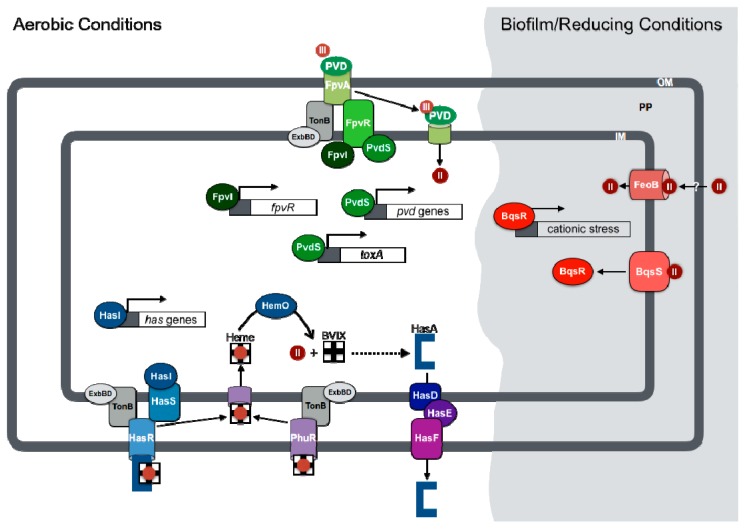Figure 1.
Overview of iron regulation of virulence in Pseudomonas aeruginosa. Iron regulation in P. aeruginosa is largely mediated by ferric uptake regulatory protein (Fur)-responsive signal transduction systems that respond to specific sources of iron. This includes the sigma factors that regulate pyoverdine biosynthesis and secreted toxins (PvdS), pyoverdine uptake (FpvI), and heme acquisition (HasI). Heme degradation by the HemO heme oxygenase may also contribute to gene regulation through the production of the β or δ biliverdin (BVIX) metabolites. In anaerobic and reducing environments, such as those found in biofilms, ferrous iron (Fe(II)) can initiate a distinct set of regulatory pathways through the BqsSR two-component regulatory system. Known regulatory pathways are shown by a solid line, and putative pathways are shown by a dashed line. OM: outer membrane; PP: periplasm; IM: inner membrane. II and III represent ferrous and ferric iron, respectively.

